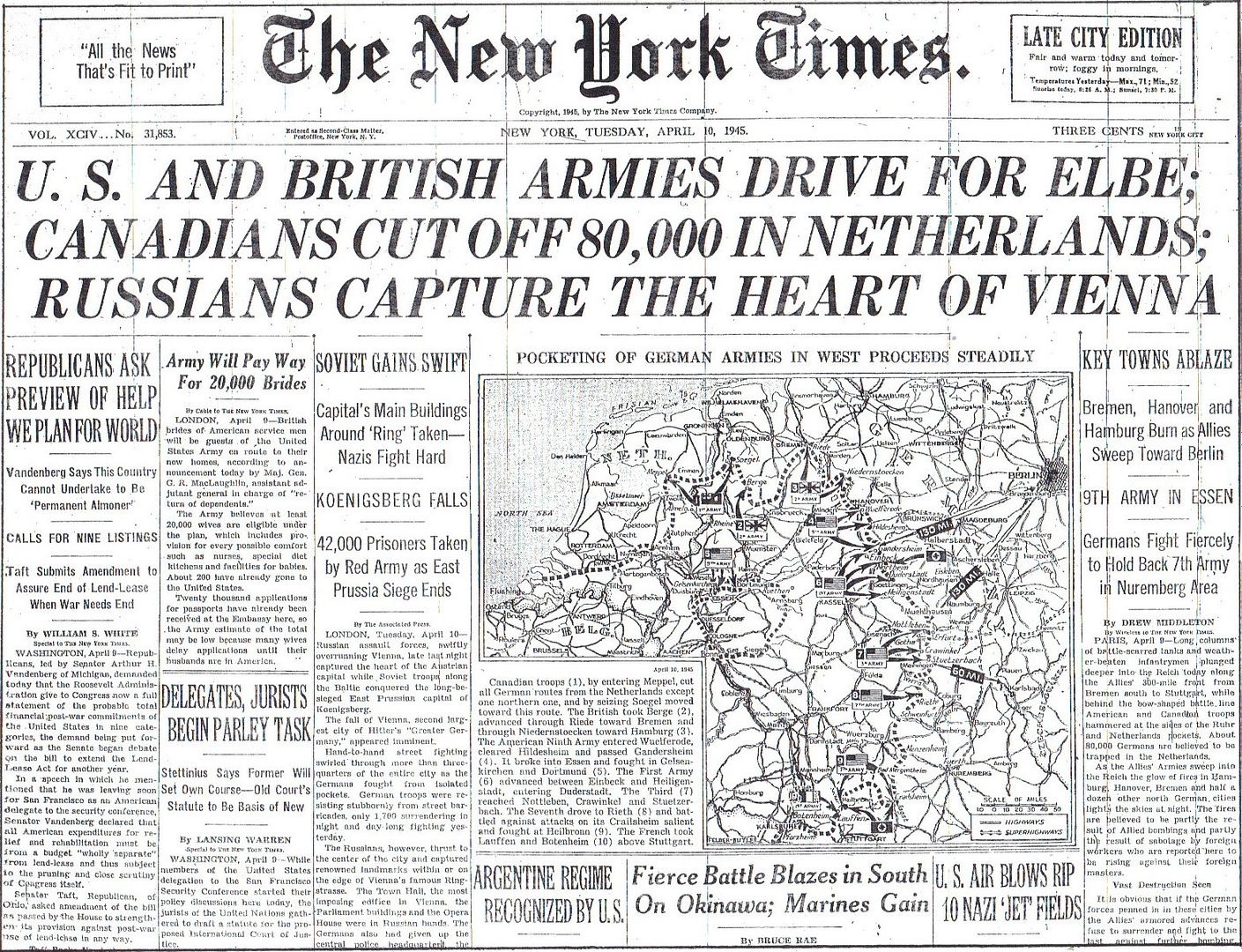
Posted on 04/10/2015 4:15:39 AM PDT by Homer_J_Simpson

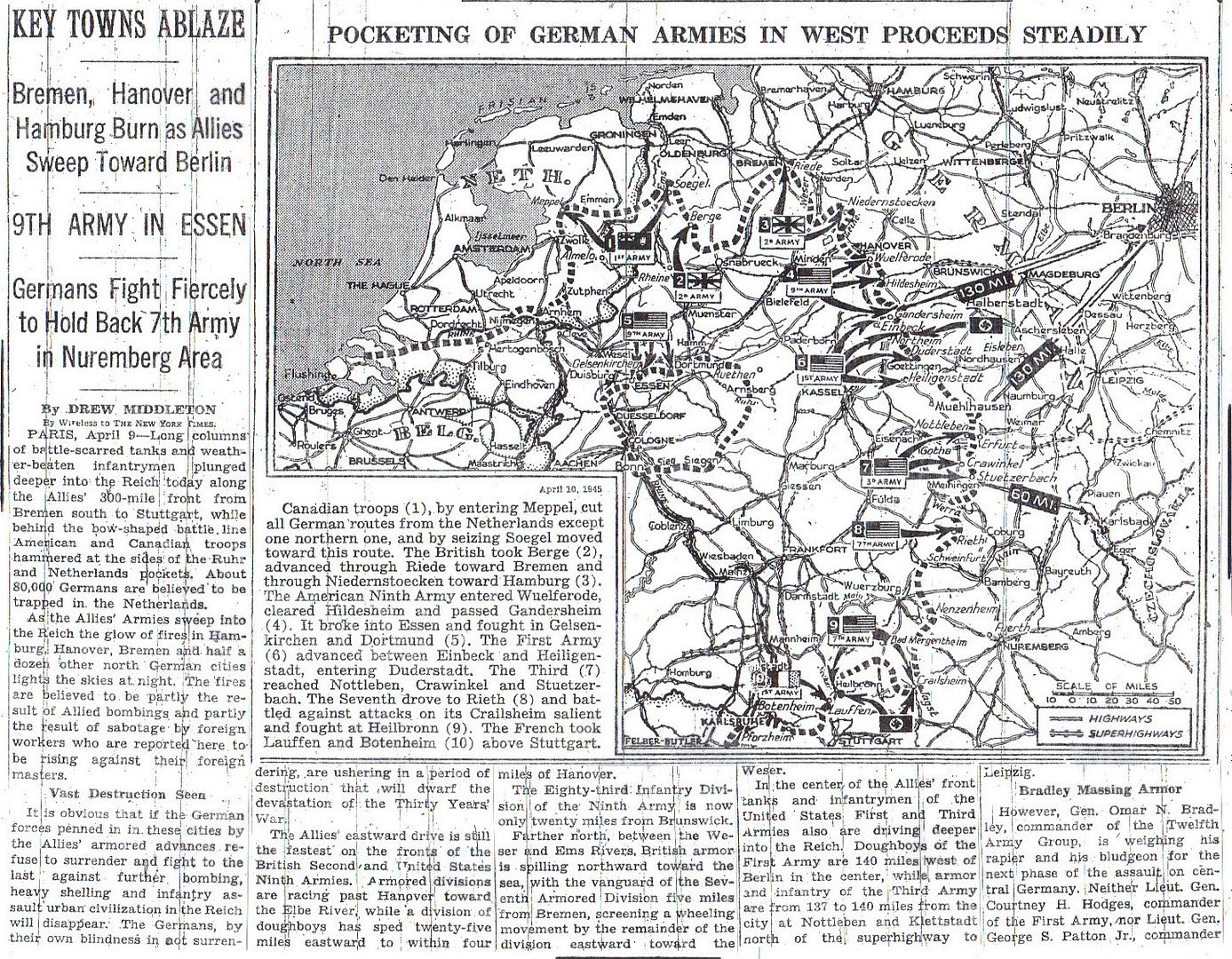
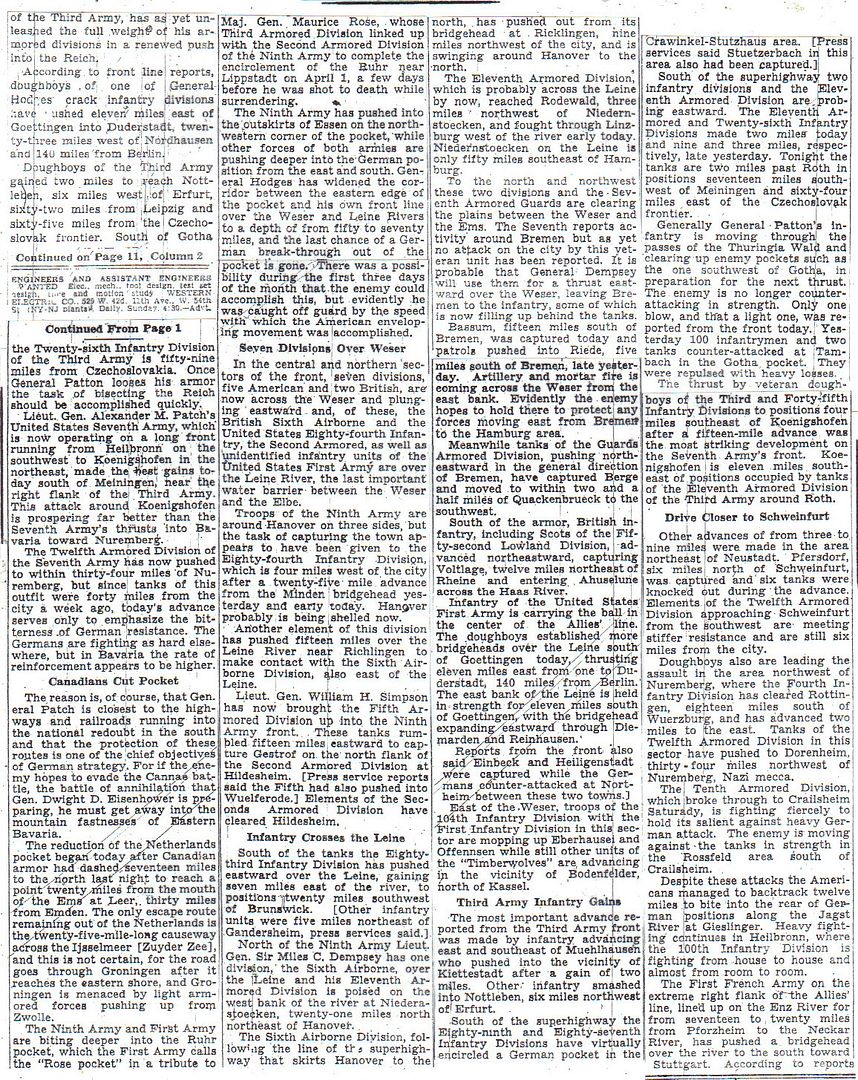
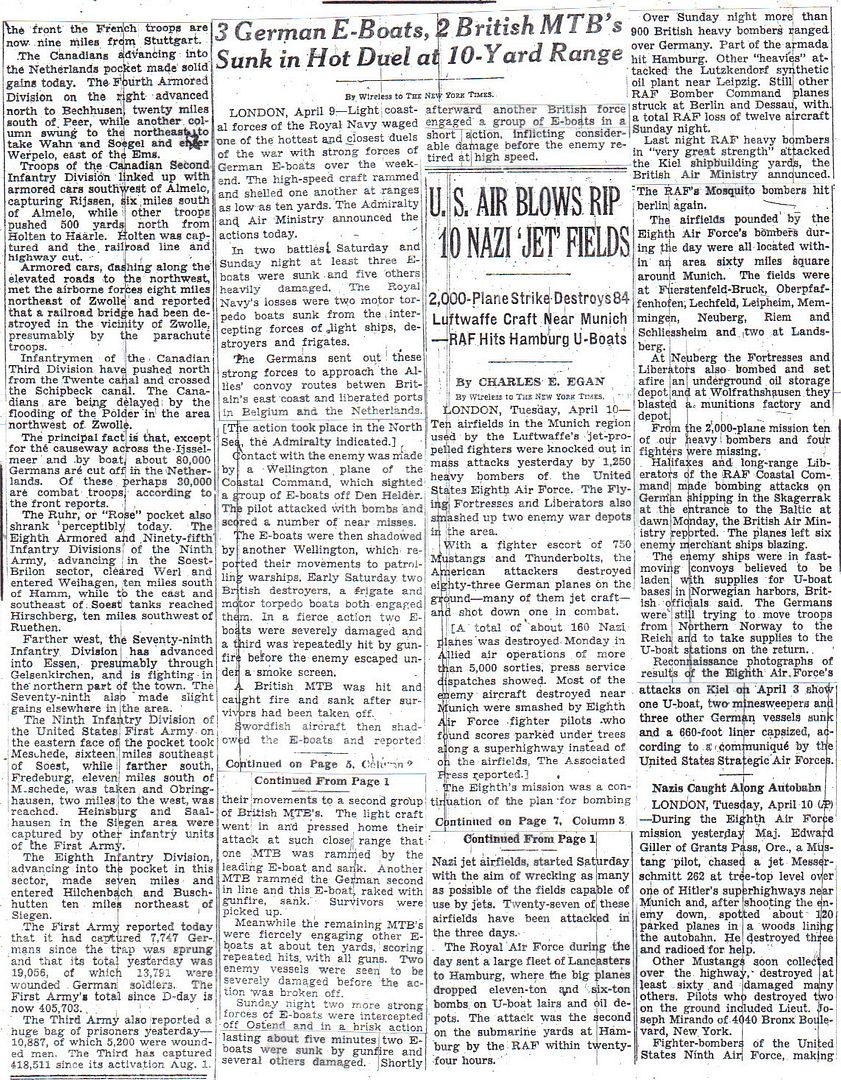
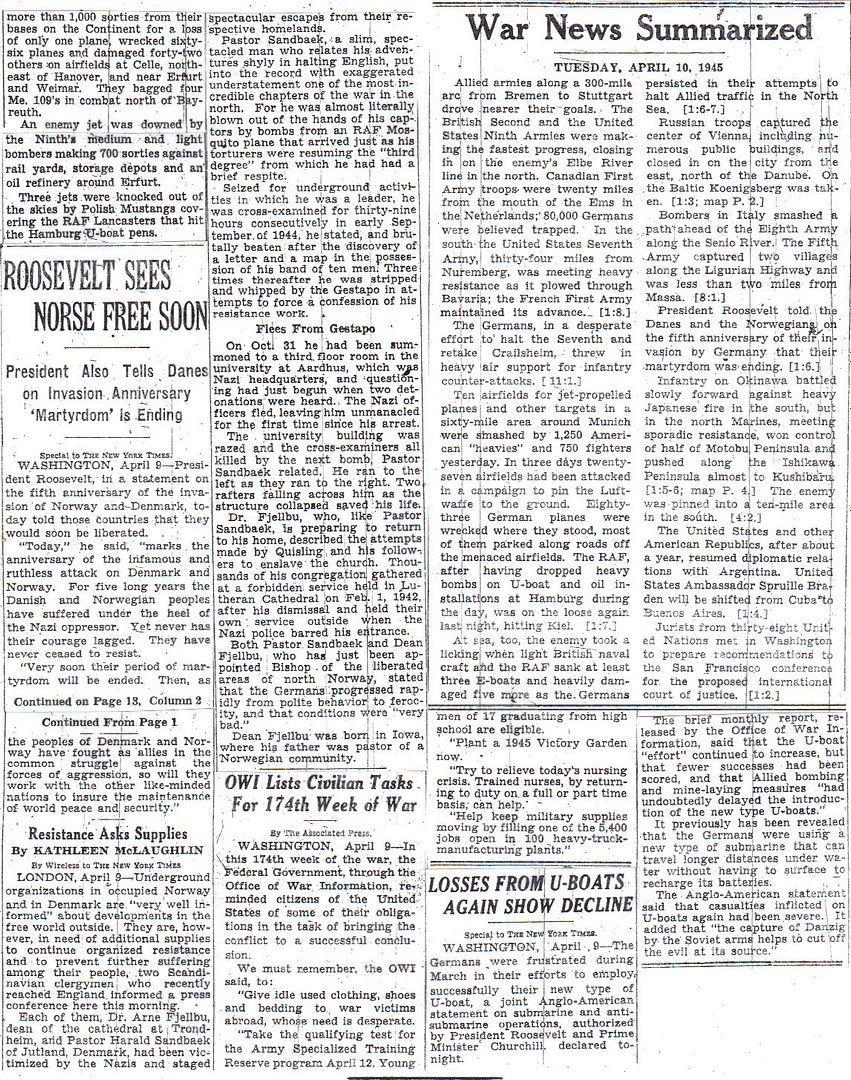
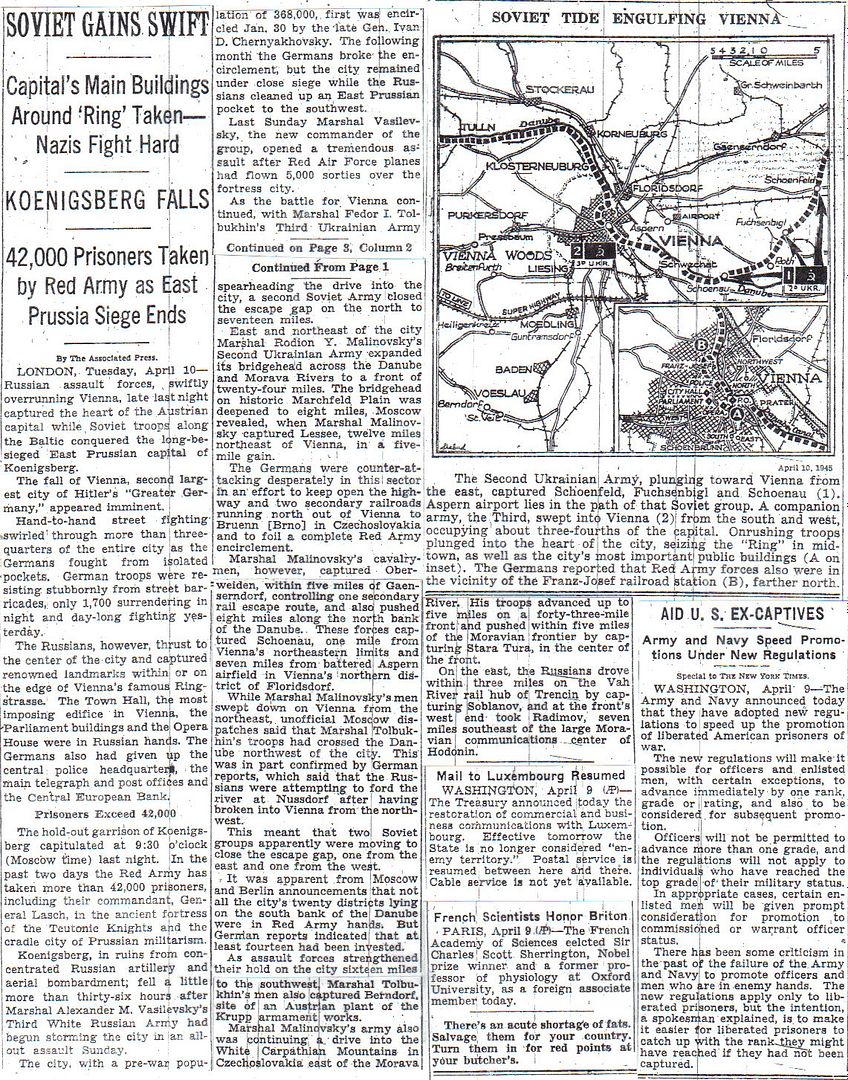
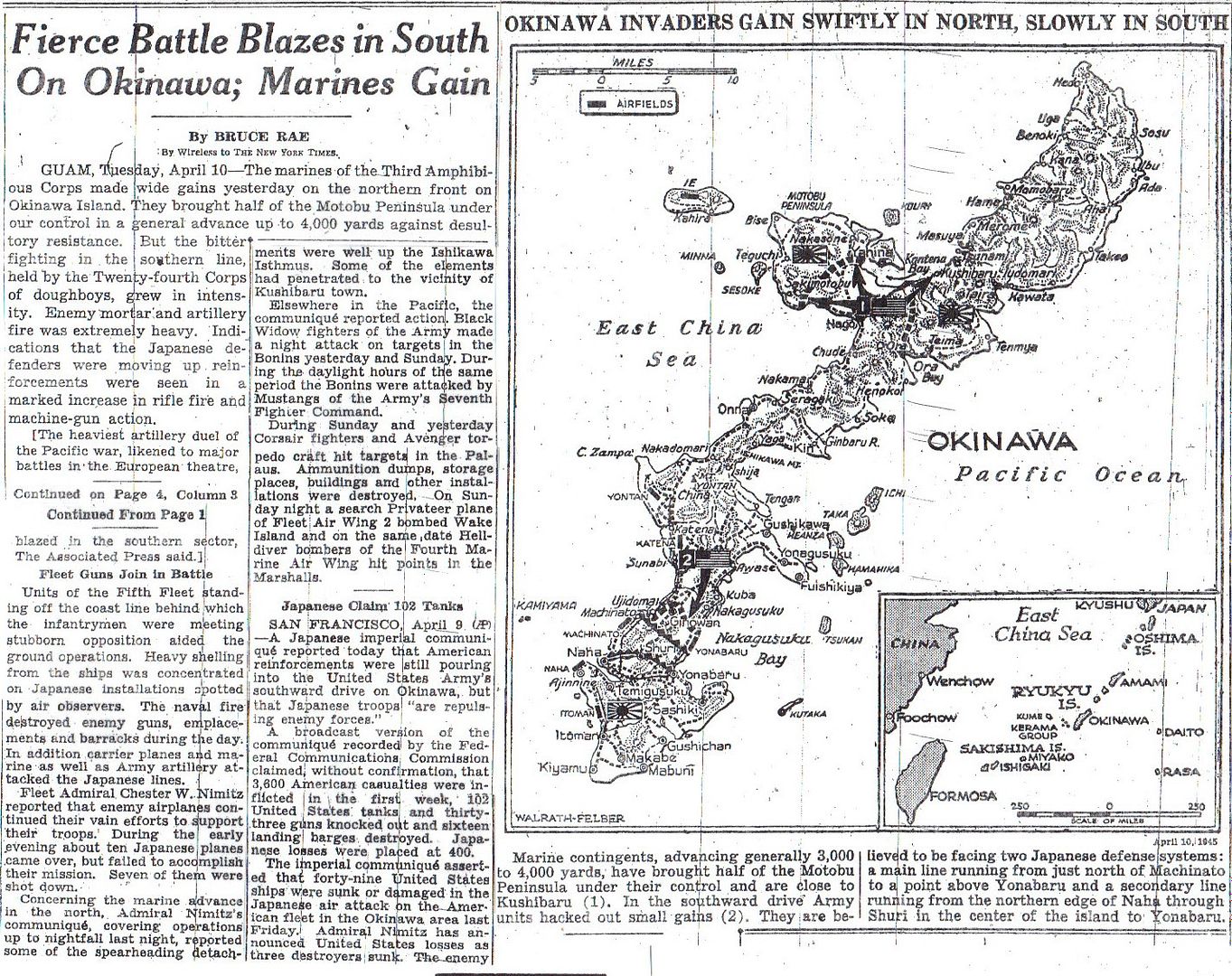

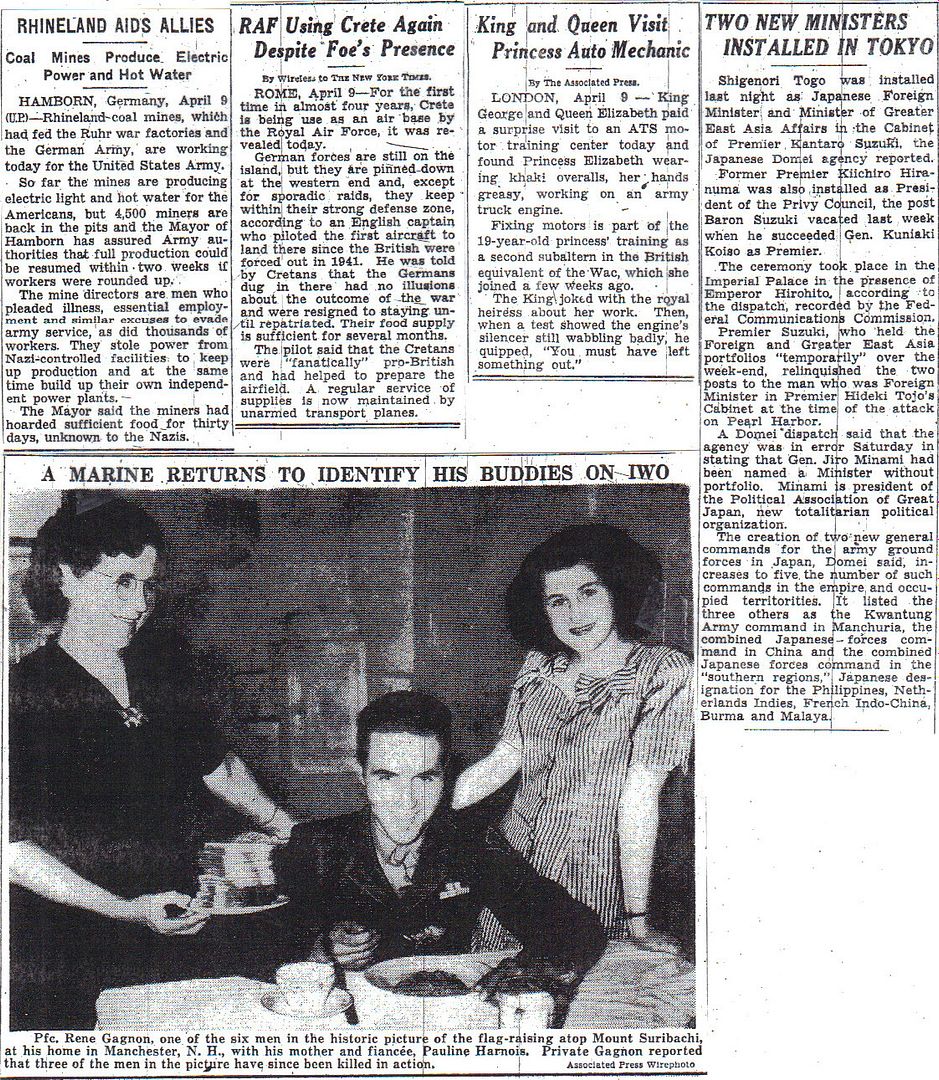
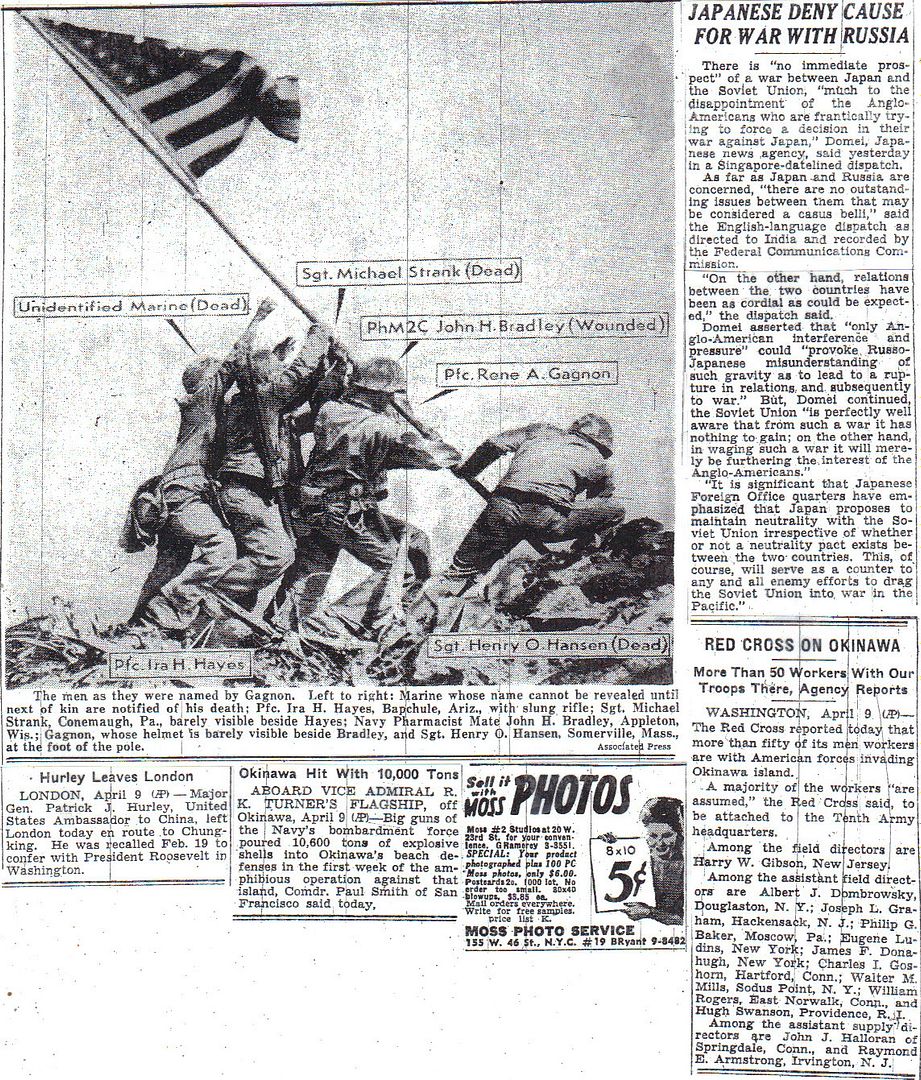
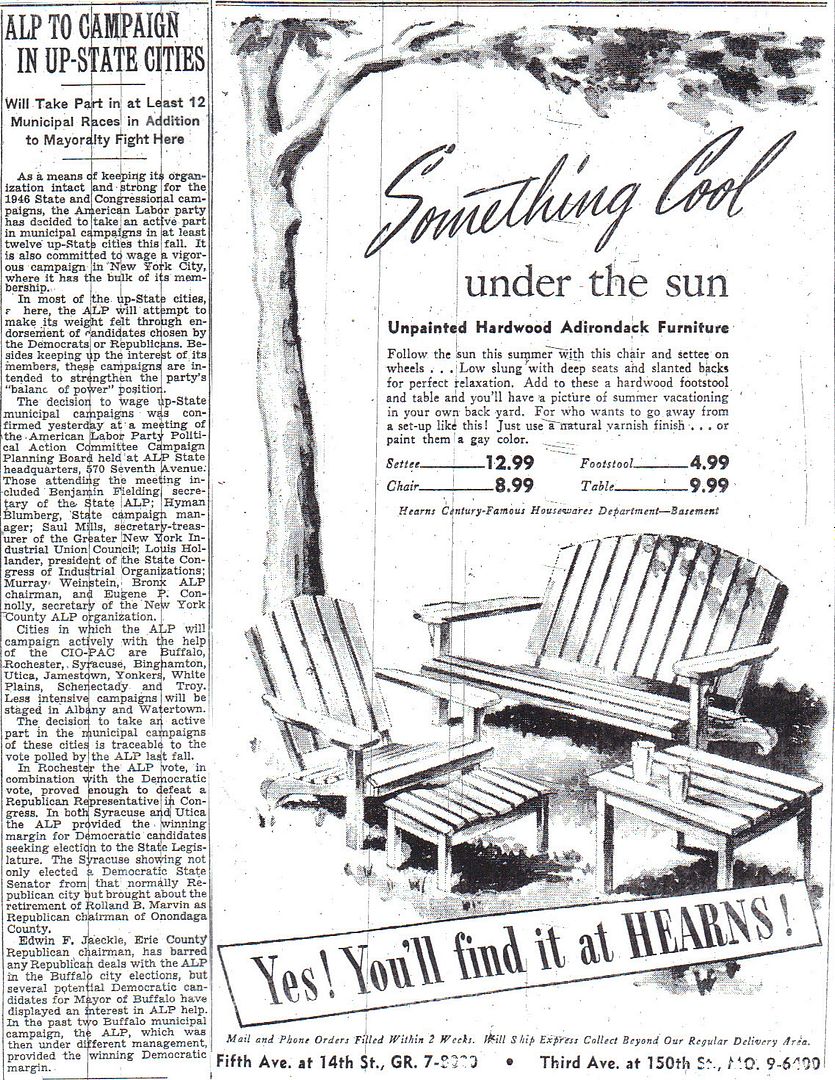
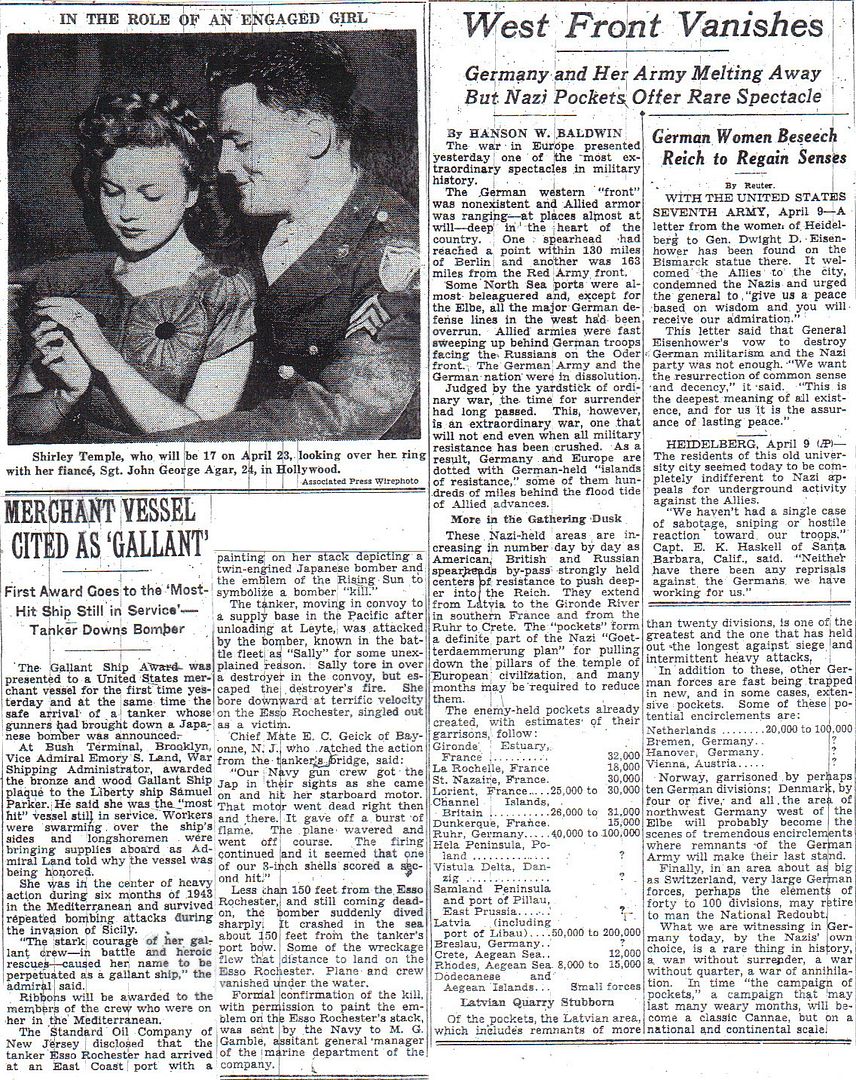
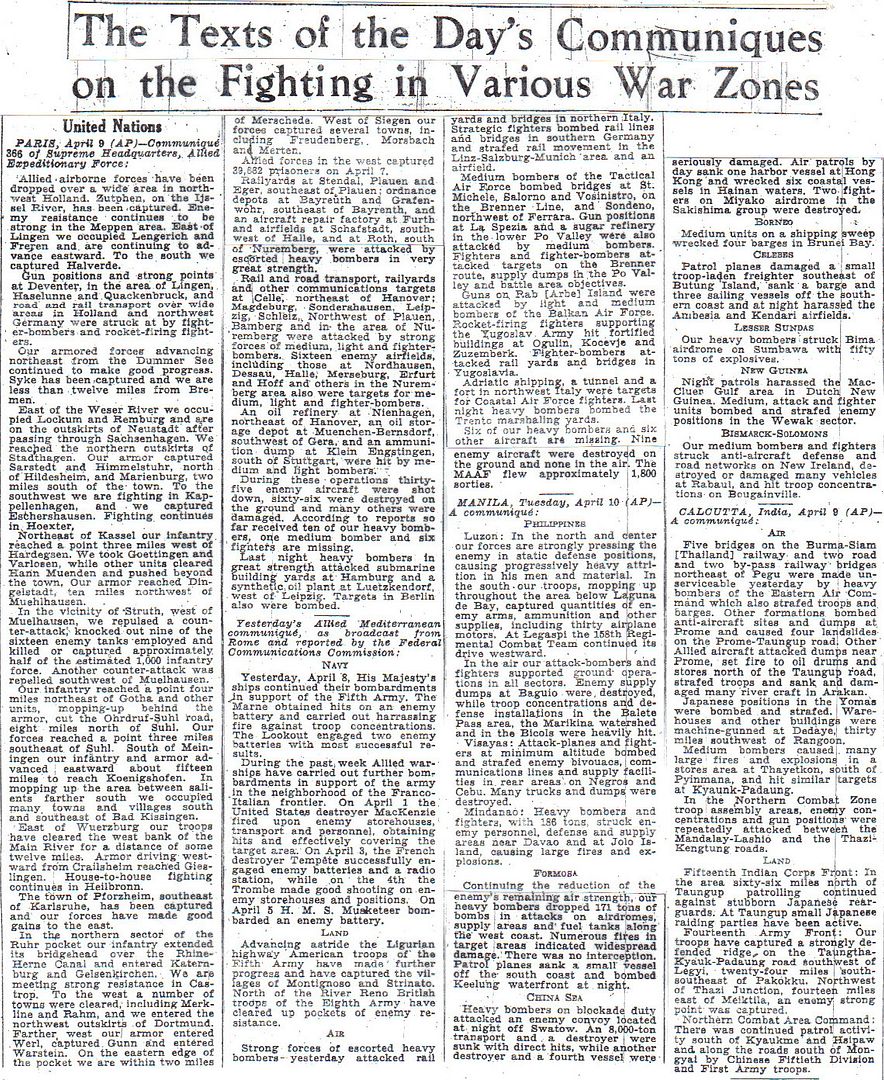
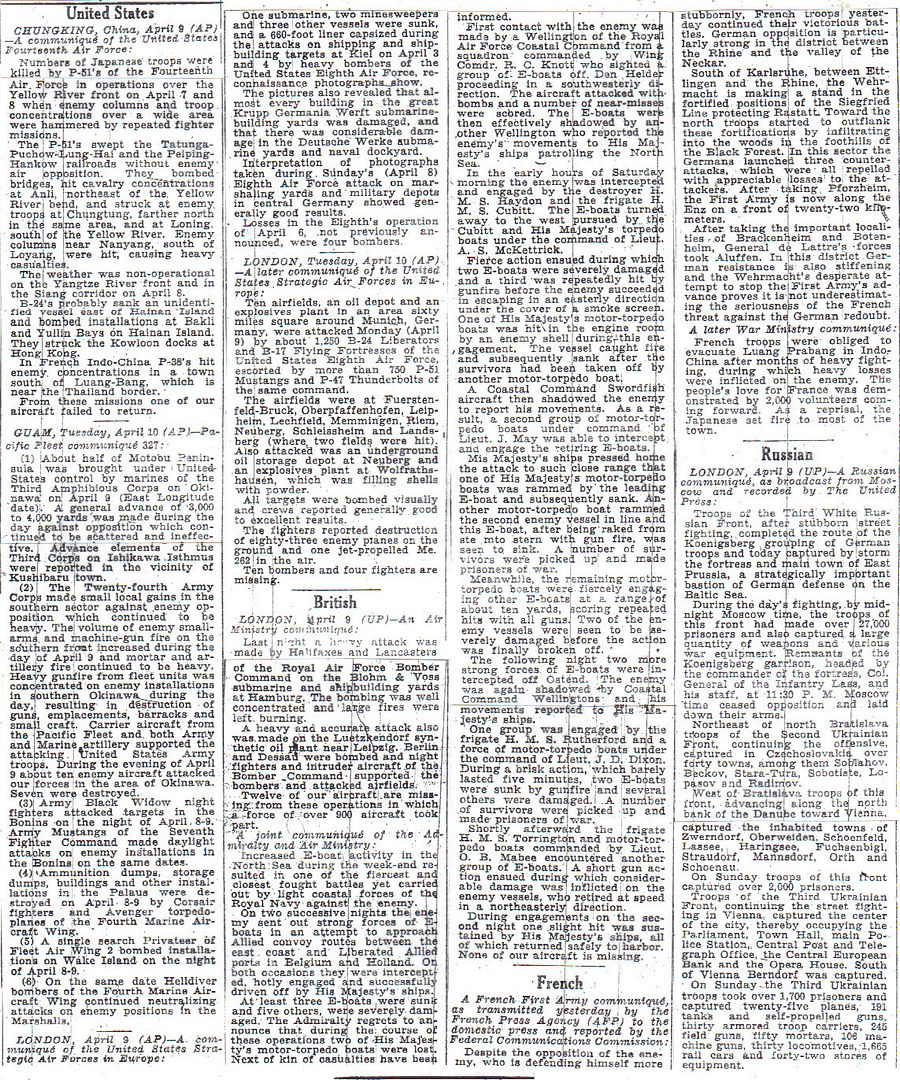
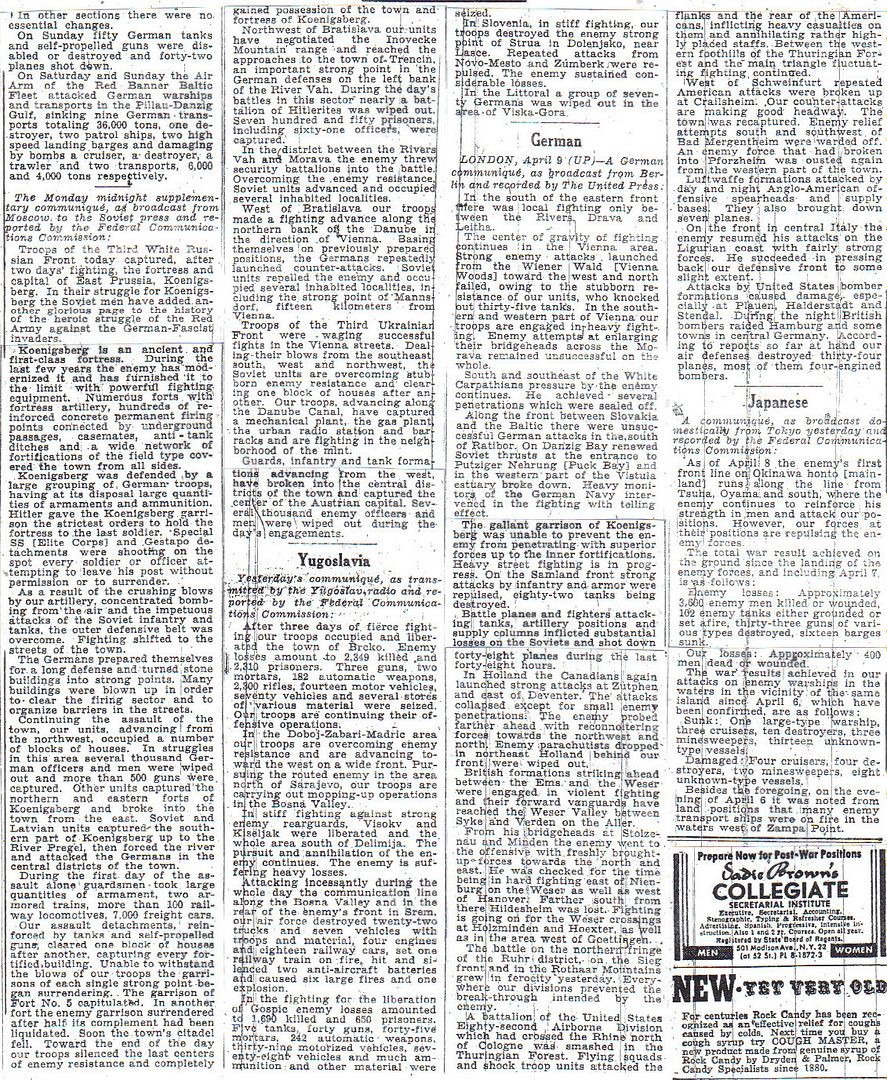
http://www.ushmm.org/wlc/en/article.php?ModuleId=10006138
April 10, 1945
The 84th Infantry Division liberates slave labor camps
The 84th Infantry Division was formed in 1917, the year the United States entered World War I. In World War II, the “Railsplitter” division landed on Omaha Beach in Normandy in early November 1944, five months after D-Day (June 6, 1944). From France, the unit moved quickly into the Netherlands in preparation for an offensive into Nazi Germany. During the Battle of the Bulge, the 84th was diverted to Belgium to stop the German offensive. In March 1945, it moved into the Rhineland and subsequently advanced northward, capturing the city of Hannover on April 10. The 84th eventually made its way to the Elbe River and made contact with Soviet armed forces in early May 1945.
As the “Railsplitter” division advanced into the interior of Germany, its troops uncovered Hannover-Ahlem (April 10, 1945) and Salzwedel (April 14, 1945), both satellite camps of the Neuengamme concentration camp. The SS established the Hannover-Ahlem camp on November 30, 1944, after transferring the camp and its inmates from the Continental Gummiwerke factory at Hannover-Stöcken. In Ahlem the inmates were forced to work in the nearby asphalt tunnels. These were to be cleared for the production of aircraft and Panzer parts for Continental Gummiwerke and Maschinenfabrik Hannover.
When the soldiers of the 84th entered the camp in Ahlem, they discovered an undetermined number of starving and ill Jewish prisoners. Reports range from 30 to 250 persons. The SS guards had abandoned these prisoners when they evacuated the camp, taking with them some 600 “healthy” prisoners. Of the prisoners sent on this death march, only 450 made it to the Bergen-Belsen camp. The SS guards had shot many of those who were unable to maintain the pace of the march. The US Army war crimes investigators reported that many of these survivors died soon after liberation from the accumulated abuse, mistreatment, and neglect they had suffered. They estimated that only 300 to 400 Jewish prisoners at Hannover-Ahlem survived the war.
Several days later, the 84th Infantry captured Salzwedel, a camp formed by the SS in July 1944 to supply forced labor for a German munitions factory. The unit found some 3,000 female inmates, mainly Jewish women who had been transported from the Auschwitz camp complex, and several hundred political prisoners. The US Army reported that sanitary conditions at the camp were poor because of overcrowding and a lack of water. Some 100 of these prisoners were seriously ill and 33 of them required immediate medical attention at a local hospital. The town’s mayor was ordered to provide food immediately for the former inmates, who were subsequently moved into modern German barracks nearby.
The 84th Infantry Division was recognized as a liberating unit by the US Army’s Center of Military History and the United States Holocaust Memorial Museum in 1993.
Engaged at 16, married at 17 seems crazy to us today but was not so unusual back then, especially as her parents approved of the match. (The marriage failed because Agar apparently had a drinking problem.)
Young marriages were often successful back then as families and society were more supportive of marriage and children. Today society is hostile to marriage and people are told that children are a hindrance.
Shirley Temple tried some adult roles, such as "That Hagen Girl" in 1947 with Ronald Reagan, but I think that the public was just too in love with the child actress. They didn't want to see an adult Shirley Temple.


Joe Peterburs, P-51 Pilot
http://wwii-letters-to-wilma.blogspot.com/2012/04/10-april-1945.html
Events in the skies over Germany, April 10, 1945
The following was taken from the Golden Gate Wing's web site.
On the 10th of April, 1945 the 20th Fighter Group was escorting about 1,300 B-17s and B-24s to targets in the Magdeburg and Berlin/Oranienburg area. The escorts were a mixed group of 800-plus P-51s and P-47s. Joe Peterburs, USAF (Retired), Combat Fighter Pilot in WWII, Korea and Vietnam tells his story of that day and a day years later.
Peterburs, flying his 49th mission, says he and his flight leader, Captain Dick Tracy, were flying high cover as a pair, the number three and four fighters having aborted the mission. Just after the bombers dropped their payloads, a swarm of Me-262 jets appeared. Peterburs today tells this story from the unique position of having first-hand information from Luftwaffe pilots who were in that day’s air battle:
"There were about 50 Me-262s that took off to meet us. At Parchem Airfield, four of them were destroyed; two on the ground and two, just after they took off, were shot down. They were from 10/JG 7, and the other group that I am aware of was 3/JG7, led by an German ace Oberleutnant Walter Schuck. Schuck had spent most the war with JG5Eismeer, flying Bf 109s from Finland against Russians on the Allied supply route to Murmansk. He had 198 victories in that theater before he was sent to fly the Me-262. His transition to the 262 had consisted of being told to watch the jets take-off and land from a vantage point at the end of the runway, followed by a cockpit checkout. Before long, he was commanding 3/JG7."
On April 10th, 1945, the Luftwaffe had known the USAAF was headed over to bomb, and the alert to take off came as no surprise.
"They wove up through the formation and Shuck kept his seven 262s together in close formation until they got through the first group of bombers and he destroyed two B-17s. Then he went sliding over to the second formation, the one that I was escorting."
Peterburs says he was flying about 5,000 feet over the bombers when he saw two Me-262s coming into the formation. He rolled over and started down.
"Shuck is behind one of the B-17s. A little short burst of 30mm and - - bang, the 17 is gone. I’m still not on his tail and he pulls onto the second one... His tactic was porpoising through the formation. After hitting a B-17, he’d pull up to lose speed, then he’d come down and go on to the next one. By now, he’d blown up his fourth B-17, the second one that I’d seen personally blow up, and just at that time I’m pulling into his six o’clock position and I start firing. I get hits in his left engine and see some smoke and a little flame. Then he immediately goes into a slow right turn, diving down into the Berlin area."
Peterburs says even with the Me 262’s damaged engine he lost his speed advantage from the original dive, and he chased the jet down to about 3,000 feet, where Shuck turned and disappeared into a cloud layer, and then turned sharply to the left. The Luftwaffe ace figured the P-51 chasing him might try to pursue on the far side of the overcast. Shortly after the turn, Shuck's damaged engine began to disintegrate and Shuck was forced to bail out.
Peterburs decided against following the jet into the clouds, and with Capt. Dick Tracy still with him, he headed further down to an airfield near Berlin that he found out later was Finsterwalde.
"It’s just loaded with aircraft, just every type you could think of. Dick takes over the lead and we get down on the deck, throttles wide open and we’re just cutting grass. We come up to the airfield, pop up and strafe. It was really nice. We caught ‘em by surprise. Dick got two on his first pass and I got one."
The two P-51s pulled up and came around for a second pass, when Peterburs saw a flak position he attacked. Capt. Tracy hit two more parked planes and was pulling up when his aircraft was hit, and he had to do a quick bailout at about 300 feet. He landed in a river near the airfield and was later captured.
"I came around again, and I think I’m 20 years old, don’t have anything else to do, and here’s all these aircraft and I’m not going to leave them when I have them allto myself. So I crank myself down under the armor plating as far as I can get and continue to make passes. I end up making three more passes and get hit on the last two. The next to the last I got hit on the wing, but it didn’t cause any problems to Josephine. On the last pass I got an Fw-200 Condor. I was told recently that it happened to be one of Hitler’s fleet of Condors. That thing just blew. I got it, raked it right through the whole fuselage and it blew by the time I was pulling off. But then I felt a thud. I could see smoke and flame in my engine and I just pulled back as hard as I could to get as much altitude as I could."
Joe had destroyed at least 5 aircraft - - an Fw-190, Ju-88, two Me-109's and the Fw-200, damaged several others and exacted heavy damage on several hangars. Now, at about 10,000 feet, he made a decision to turn west. He was about 15 miles from Magdeburg, and losing altitude when he came under attack by an Fw-190.
"By this time I’m down to 1,000 feet. At three o’clock, I see the Fw-190 coming at me. And he’s firing his guns, and he has some rockets and he fires those and they all miss. And I’m cussing like heck. I look at my altimeter and I’m at 500 feet, too low to bail out. So I grab the stick and start looking for a place to belly it in. And then it comes to my stupid head that I’m all un-strapped. Because I was going to bail out and if I’d bellied the thing in, I’m just not going to make it."
Peterburs says these thoughts raced through his mind in probably a millisecond. While the altimeter wound down to 350 feet, he climbed out on the left wing of the P-51 (the right side was burning) and let go.
"I hit the tail with my right knee, pulled the ripcord, the chute opened, I swung once and hit the ground. Hard, very hard."
Peterburs found himself in the middle of a field, with a group of 15-20 farmers running toward him. He took his .45 pistol out, removed the clip and threw it one direction, threw the extra clip in another direction, and threw the .45 in a third direction. He says the farmers were upon him and were ready to do him in when a Luftwaffe sergeant rode up on a motorcycle, fired a couple of warning shots from a Luger and told the farmers to let the downed airman go. Next, another group of citizens came and talked the sergeant into bringing Joe to what he thought was the town hall.
Peterburs says the local police chief, a man with a black leather glove over what had been his left hand, pulled out his Luger, placing the barrel at Joe’s temple and threatening to shoot. But the Luftwaffe sergeant trained his pistol at the police chief and said he would be leaving with Peterburs. A twenty-minute motorcycle ride later, Joe was at a nearby airfield, where he was placed in solitary confinement and interrogated by the Gestapo for three days. While there, he spent the nights in a bomb shelter with the Germans during nightly bombings by the British.
Peterburs was next moved by rail boxcar to Stalag 11, which became a short stay because the Germans were evacuating the camp before advancing Allied forces. The Germans put him with a group of about 100 British soldiers for a ten-day march towards the east, a march under constant attack by Allied fighter planes.
"We get to Stalag 3 at Luckenwalde which was a Russian and Scandinavian prisoner camp. And guess who I bump into? Capt. Tracy has been sitting there for ten days, along with Sgt. Lewis who was in one of the B-17s shot down, as well as Sgt. Krup, who could speak fluent Russian."
The four men, acting on a plan hatched before Peterburs arrived, took advantage of lax security and went under the fence. About 4-5 miles from the camp, the freed POWs heard the rumble of Soviets tanks, and sent Sgt. Krup (who could speak Russian) to speak with the Russians. Handed weapons, the four airmen were inducted into a Red Army tank corps and fought with them from Juterberg to the Elbe.
"As we were going, German civilians, as soon as they found out Americans were with the Russians, sought us out. They wanted us to sleep with their daughters, sleep in their houses, so they’d be protected from the rape and pillage that was going on with the Russians. I accepted sleeping in their house, but not sleeping with their daughters."
"We eventually got to Wittenberg, preceded by the Stormaviks flying close air support. About that time I noticed they were keeping tighter control of me. I didn’t know why, but this was the time of the Potsdam Conference and tensions were starting to become high between the Allies and the Russians."
When the Soviets reached the Elbe he joined a US Army infantry unit that met with the Russians and did mop up operations around Halle, a major Luftwaffe base.
"I was able to pick up some beautiful souvenirs: flying suits, dress uniforms and the like. I stuffed them in my duffel bag. Then we finally ended up playing poker and the Army guys getting me so drunk I lost all my souvenirs. I got mad and just took off by myself and walked about five miles down the road."
There, Joe saw a C-47 parked in a field, with some political prisoners being loaded on board for a flight to Paris. Peterburs asked for a ride and soon found himself in the French capital, stamped, deloused and sent to a POW collection point called "Camp Lucky Strike" to soon be returned to the United States. The war was over for him, he was anxious to be married and settle into a ‘regular’ life.
Flash Forward
Fifty-four years later (1998), Peterburs was contacted by Werner Dietrich, an amateur historian in from Burg, Germany. In a letter, Dietrich stated that on April 10, 1945 he was a 13-year old boy hiding in a ditch watching an air battle above him. He saw a Fw-190 fire rockets at a P-51 and miss, and saw Peterburs bail out. Dietrich also said he knew where the Mustang crashed. In 1996, after East and West Germany were reunified, Dietrich used the serial number from aircraft parts he found to begin an exhaustive 19-month search for the pilot. In May of 1998, when a documentary producer invited Peterburs to Germany for a reunion with Dietrich, Joe had to refuse. He was caring for his wife after her stroke and was unwilling to leave her. The producer made arrangements for Dietrich and a video crew to visit him in Colorado Springs for a follow-up documentary.
Meanwhile, Dietrich kept working on the story, talking to people from Finsterwalde and finding the pilot of the Me-262 that Peterburs had hit. About three months later, Dietrich announced by letter he’d found the jet pilot, 206 aerial victory Luftwaffe ace Walter Schuck. Peterburs says he gave it about a 50% chance of being the true story.
"That was the way I left it until about 2003. I get an email from a Christer Bergstrom, a prolific writer on German air operations in World War Two. He’s writing Walter’s biography. And I’d been in contact with Mario Schultz from Oranianberg, who had also been researching that particular mission."
Schultz requested Peterburs’ account of that April 10, 1945 mission. In less than a week he told Joe that it must be conclusive that Joe had shot down Walter Schuck. Shultz’s conclusion was based on confirmation that Shuck was the only Me-262 pilot who shot down two B-17s on that day, and that Peterburs’ description of Shuck’s last two B-17 shootdowns that day was, detail-by-detail, virtually identical. On 18 May 2005 Joe Peterburs met Walter Shuck in person.
"It was a tremendous experience, and we took to each other immediately. We are the best of friends."

Walter (on the wing), Joe and a P-51 named "Josephine".
You sure got that right.
http://battlebrotherhood.com/news-en/april-10-1945-1389-day-war/
Chronicle April 10, 1945 – 1389 day day of the Great Patriotic War.
April 10 troops of the Third Ukrainian Front, continuing street battles in Vienna, cleared the enemy all urban areas, located on the west bank of the Danube Canal.
Occupying the building of the station Franz Josef garrison hospital, cavalry barracks, Academy of Sciences and other buildings, coming from the north-west and south-west part of the Soviet united in the city center.
The commander of the Third Ukrainian Front, Marshal Tolbukhin ordered the demining organization in Vienna and other settlements in Austria.
On the same day, April 10, 1945.
Moscow
The Soviet government issued a statement about the attitude towards Austria. “The Soviet government is not aimed at the acquisition of any part of the Austrian territory or change the social structure of Austria … It will contribute to the elimination of the regime of fascist invaders and restore democratic order in Austria and institutions.”
Czechoslovakia
North-east of Bratislava troops of the Second Ukrainian Front fought out to the river Vah and the city of Trencin on both sides pinned to the river German garrison. By noon, the city has been cleared of the Nazis.
West Germany
In the palace, located 16 kilometers south-east of Giessen, part of the US Army discovered hundreds of valuable paintings and dozens of manuscripts, the Nazis removed from European cities. Many art treasures stolen from the collections of Krakow, Prague, Amsterdam, Paris, were returned to their museums. The fate of some, such as the famous Amber Room, the Germans exported from the Leningrad, still remains unknown.
Italy
British troops advancing, advanced 5 kilometers and came to the right bank of the river Santerno.
The Central Committee of the Italian Communist Party called on the people to armed rebellion in the German troops occupied part of Italy.
Moscow
April 10 issued a decree of the Presidium of the Supreme Soviet of conferring the title of Hero of the Soviet Union Nikolai Ivanovich Yurchenko, posthumously. Hero tanker was killed in February in crossing the Oder.
http://netnebraska.org/basic-page/other/war-letters-death-1945-china-sea
April 10, 1945
Letter from Glendal T. Harper
to the widow of Medical Officer Lieutenant Edwin L. Taylor
My dear Mrs. Taylor,
I have just received your letter of March 14 and will endeavor, within my limitations, to fulfill your request. The task as all such must be, is difficult but certainly not unpleasant in so far as it may in some slight way ease your burden.
To start at the beginning, Dr. Taylor reported aboard the latter part of November as our regularly assigned medical officer. His cheery disposition and love of talk made him an easy companion and friend aboard ship. His recent experience with MTBs lent a certain amount of mystery to him as most of us were untried in battle.
On an evening or in spare moments, which in December were many, we spent many long hours of shooting the bull and downing coffee. His greatest pleasure out here seemed to be dallying with the tidbits and delicacies which you seemed to provide continuously - and drinking endless cups of coffee well interspersed with conversation.
At these times inevitably the talk would at one time another turn around you and your son — of his hopes, plans, dreams — of the little problems of the past, of child-raising, and without fail, his beaming pride in his son and confidence in your training and rearing him that he might be a better man than most.
We argued over details, mingled remembrances both sad and gay, sedate and racy, for he did enjoy life and the living thereof.
From time to time, though, he cast a sort of premonition of things to come. His duty he knew, and there was never any shirking or fear in performing it. Somehow, there seemed to be the feeling that luck had too long been on his side and that this was the time. Often he spoke of premonitions in his family - which may have contributed to that impression. He knew our mission and knew the dangers involved; he was not afraid, but he wasn’t sure of returning. Just before we sailed he insisted on getting off a power of attorney to you, something which he had delayed for a long, long time.
We had been underway for some days, had passed dangerously close to enemy shores, had had numerous alerts. Nevertheless, it wasn’t until the day before we were to arrive at the far beach that any serious attacks were made. During the day of January 12 there were alerts, several bodies reported around and about us. The air patrol managed to keep all except a few snoopers away. About 1815 we were alerted and went to general quarters, securing a few minutes later, but standing by for evening quarters.
Six Jap planes appeared, coming from Manila, about seventy miles to the southeast. They circled and started their runs. For some unknown reason, three of them decided to pick on the LST 778 - all the ships in the very large convoy were firing, throwing an umbrella of tracers into the already colorful sky of the China Sea. One plane was brought down about twenty feet from our starboard side with fortunately very little damage to us. Two others crashed nearby in flames.
Shortly after the first plane crashed, it was reported to me that Dr. Taylor had been seriously wounded by shrapnel. He was standing on the bridge deck almost directly below me. The assigned stretcher bearers placed him in a stretcher and removed him to the wardroom which is our main battle dressing station. He personally directed this, having only momentarily lost consciousness, if at all.
That he was cognizant of his own condition was too evident to inquire about. He knew that only a near miracle could save him. His legs were paralyzed, multiple shrapnel wounds in the chest, abdomen and back with clear evidence of internal hemorrhage.
He spoke of you and your son with neither sadness nor worry. He would miss you and knew that you would miss him. There seemed to be in his mind a picture of peace and untold happiness which he would not destroy for temporary reality because he felt that in you his son would find everything which he desired that his and your son should have. That he loved you deeply, you know so much better than I could ever know; that he was sorry to leave you was a pure sorrow of parting unembittered by worry or concern. That he could leave life without bitterness or hysteria was the highest tribute that could be paid to his love for you, confidence in you, and esteem for you.
Finally, he requested that I write you but all that he had to say was, “Good-bye.” He said you could take care of all else.
Blood transfusions were given during the night; a doctor came on board early the next morning. Dr. Taylor was either unconscious or heavily doped at all times after about 0300 on the 13th when his veins collapsed. We were unable to transfer him to a hospital ship until about 1600 on the 13th. He died on the x-ray table a little after 1700 on the 13th.
Dr. Causey of the LST 705, San Francisco was the doctor who came aboard on the morning of the 13th. Lt. Fife spent an almost continuous 18 hours at his side and was responsible for his still being alive when adequate medical aid was at hand.
The autopsy revealed that in addition to the above wounds a 50-caliber shell had exploded in the vicinity of his kidneys. Further findings were a fractured spine, perforated bladder and kidney, multiple perforations of the intestines.
Near the little town of Lingagen, looking out towards the wide gulf whose endless breakers roll on the white shores, palm fringed and spotted here and there with the palm-shroud huts of fishermen, lies your husband with many other brave men. They died not that we should sorrow for them, but receive strength from their sacrifice and devotion to make of this world for those who remain behind them that valley of contentment which they always hoped to find here.
This has been muddled and crude but perhaps somehow some few words here or there may be the answer which you wish. I do hope that his things have arrived. We tried to include everything which wouldn’t spoil. Some Christmas packages since received have been turned over to welfare. Some were in bad shape; others I felt you would not mind our keeping. The little candles decorate our table on festive occasions — a gentle reminder of one absent.
Sincerely,
Glendal T. Harper
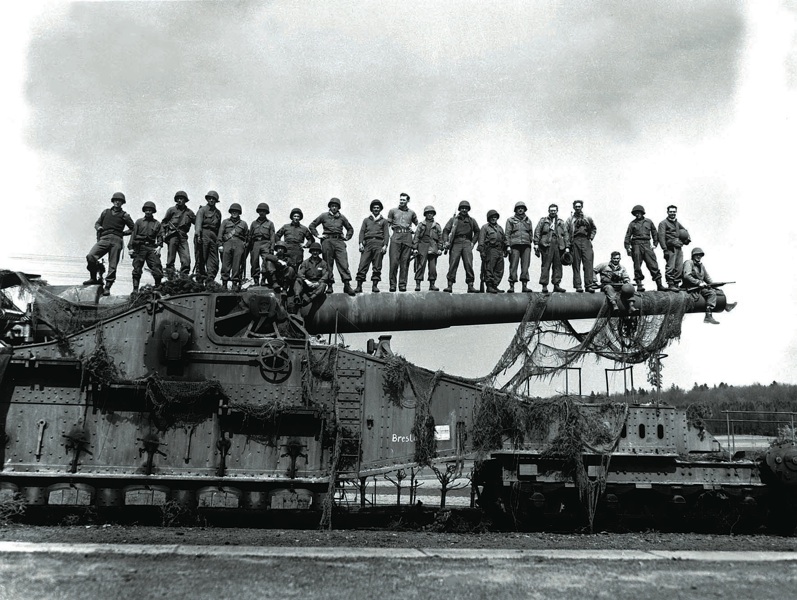
April 10, 1945. Mammoth 274-mm railroad gun Captured in the U.S. Seventh Army advance near Rentwertshausen easily holds these 22 men lined up on the barrel. Although of an 1887 French design, the gun packs a powerful wallop.
Great story
Very much enjoyed this series of interesting articles. Thanks.
Mrs alfa6 and I just celebrated are 40th on 3/1, It’s been a bit of hard work over the years but not to many regrets:-)
I was 21 and just graduated from college. Mrs alfa6 was a grand old 18 and regrettably an “orphan”. Her father was an unlucky bystander at an armed robbery when she was about 10 and her mother had crossed over from cancer when she was about 16:-(
Regards
alfa6 ;>}
On April 10, 1945 B-24s from the 55th wing of the 15th Air Force were on the 2nd day of Operation Wowser. This was a switch from strategic to tactical bombing in support of the 5th and 8th Armies driving Axis troops out of Northern Italy. After dropping their payload at 18,000 ft, the Stevenovitch 44-49710(aka The Black Nan) received a direct hit between the #1 and #2 engines from an 88 mm shell. Of the 11 crew, only the Radar Navigator survived as he was thrown out of the open bomb bay.
On board were:
Lt. Col. James Gilson – Command Pilot Capt. Charles Foote IV – Pilot (My great uncle) 1st Lt. Robert O’Leary - Navigator Capt. Lacey Morton - Navigator 1st Lt. Edward Walsh - Radar Navigator Capt. George Wall - Bombardier Sgt. Jerrold Ruben – Engineer/Gunner Sgt. Charles Montegut Jr. – Radio/Gunner Sgt. Robert Rogers - Gunner Sgt. Norman Cope - Tail Gunner Sgt. Melvin Thomason – Gunner









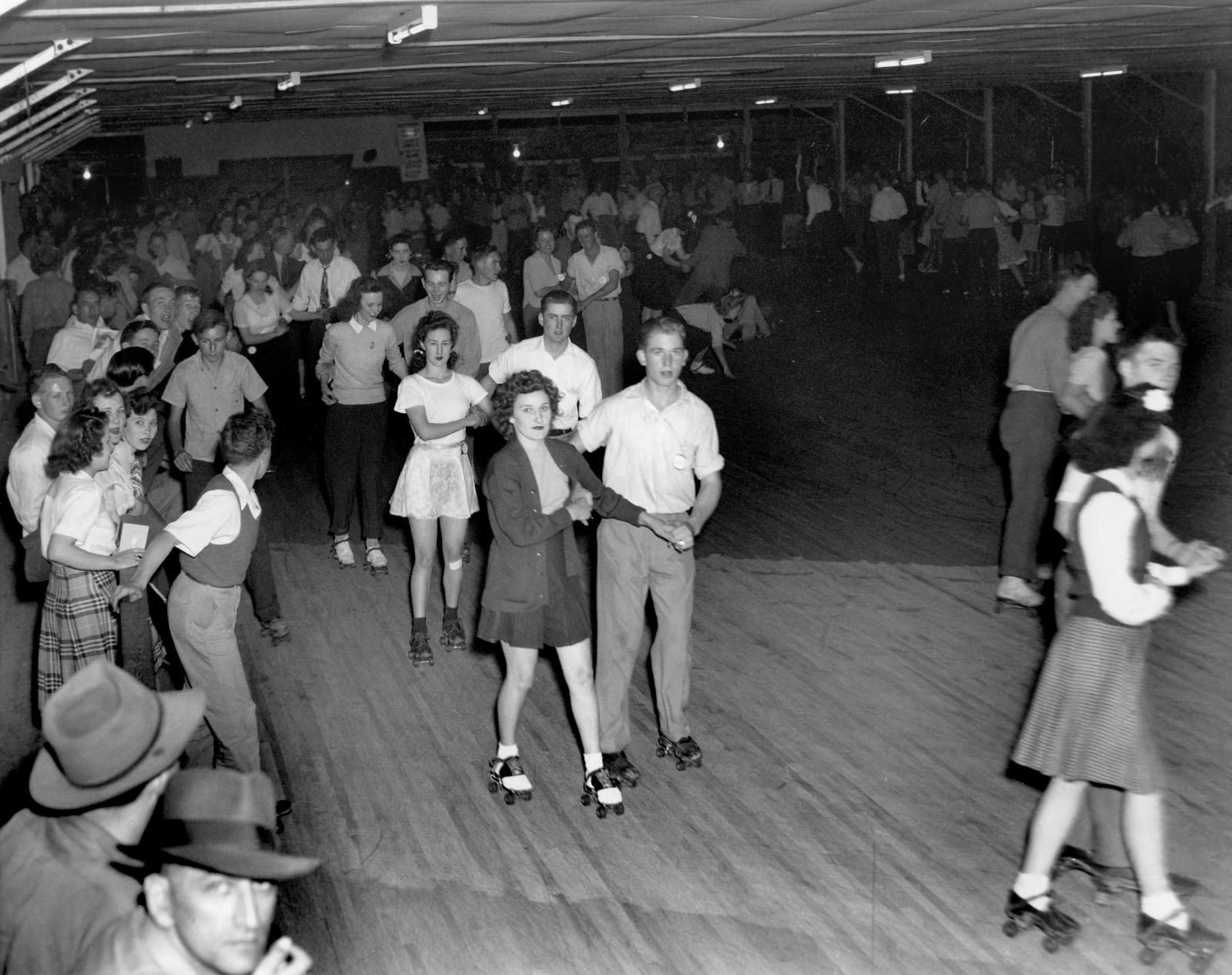
OK, it’s April 10, 1945, and the war has made everybody nervy, crazy in the Manhattan Project encampment known as Oak Ridge. So what do you do to regain your sanity? Well, you head to the roller-skating rink, of course, and that’s just what these Oak Ridgers are doing. (Department of Energy archives/Ed Westcott photo)
Actually Jacquerie had a valid point.
While the armament carried favored the US PT boats the German S-100 class E-Boats were of a slightly larger design and from the weight, 100 tons vs 80 ton for an Elco PT Boat I suspect the E-Boat had slightly better sea keeping qualities.
The other advantage of the S-100 were the diesel engines which gave the E-Boat almost twice the range of an Elco PT Boat. And in the Pacific range would have been king! Stated speed for E-Boat vs PT Boat were about the same at factory with the E-boat slightly better but in operational use I suspect there was not much difference.
Wiki on E-Boats http://en.wikipedia.org/wiki/E-boat
Wiki on PT Boats http://en.wikipedia.org/wiki/PT_boat#Armament
Regards
alfa6 ;>}
Re: the Oak Ridge pic, a Mary Hopkins picture for sure
Regards
alfa6 ;>}
Who was she?
My mistake it was Mary Hopkin not Hopkins
British Female singer from about 1968
https://www.youtube.com/watch?v=y3KEhWTnWvE
I is getting to be an old guy :-)
Regards
alfa6 :>}
Ah. Okay. I get it now.
My dad was born in ‘32. Too young for WWII, but he served in Korea. Anyhow, In the late Forties he loved skating at the old rink in Denison, Iowa, which was the town Donna Reed hailed from. And then they would go out to eat at Cronk’s, which is still there today.
I guess I inherited it. When I was a teenager growing up in Ralston, Nebraska, I went skating pretty much every weekend. Loved it. Probably mainly because that’s where the girls were. :-)
Probably the same reason my dad liked it so much, now that I think about it. lol...
April 10, 1945 sure seems like a very eventful day. It was also the day my father turned 18. By that time he’d been in the fight for almost a year. Unfortunately, he was on the losing team. I know very little about that phase of his life. He was in the kriegsmarine serving on a patrol boat on the eastern front. Around this time 70 years ago he and a buddy decided it was time to take Horace Greeley’s advice and head west. They eventually made it to the British lines and were taken prisoner. After the war he worked as a civilian employee for an American military police unit as an interpreter. In the early 50’s he emigrated to the U.S. and shortly thereafter I entered into this world as the first American of the family’s.
Thank God he made it to the west.
And thank you for sharing your family’s story.
Disclaimer: Opinions posted on Free Republic are those of the individual posters and do not necessarily represent the opinion of Free Republic or its management. All materials posted herein are protected by copyright law and the exemption for fair use of copyrighted works.